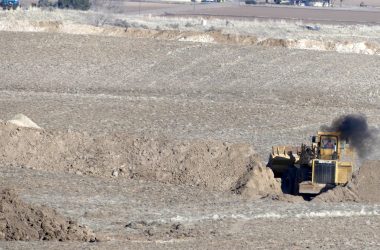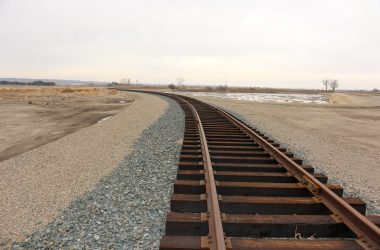Malheur County residents could see substantial increases in their electric bill this fall if the Oregon Public Utility Commission approves the Idaho Power Company’s proposed rate hike.
In its first proposed rate increase since 2011, Idaho Power Company is asking the state to approve rate hikes of 36% for irrigators and nearly 27% for residential customers, according to information from the commission. The commission is scheduled to decide by October.
The commission held a public meeting in Ontario on Wednesday, March 20, to hear comments about the proposal. About 15 people attended the session at Four Rivers Cultural Center.
The commission will accept public comments until April 3 by phone at 503-378-6678 or email at [email protected].
Under the proposed increase, the average residential customer in Malheur County would see about a $32 monthly increase, according to data from the commission. The increase would be as much as $40 a month for rural customers.
For agriculture, the average farmer irrigating in season four months out of the year will see a nearly $256 increase in their monthly utility costs. During the off-season, the jump in price would be $9 a month.
Sven Berg, a communication specialist with Idaho Power, said that farmers’ energy use varies significantly. Some irrigate thousands of acres, while others only a few.
Sven Berg, a communication specialist with Idaho Power, said that farmers’ energy use varies significantly. Some irrigate thousands of acres, while others only a few.
Idaho Power seeks to increase the annual revenue from the nearly 20,000 customers it serves in Oregon by $10.7 million.
Oregonians comprise less than 5% of Idaho Power Company’s customer base, which serves roughly 620,000 people in Idaho, according to the commission.
Paul Skeen, a local onion producer, told the commission that the proposed rate hike would hurt his business. He said three onion storages on his farm that draw power cost $2,000 a month under Idaho Power’s current rates.
He said the rate hike will also hit those who work for him – residents of Malheur County. He employs about 10 people, each of whom will see their bills increase significantly. Some of them, he said, have children. Another, he said, is a widow.
Malheur County, he said, is the poorest in Oregon. For at least a decade, the county’s rate of child poverty has been the worst in Oregon, according to state data.
Idaho Power contends in its filing with the state that the rate hike would allow the company to keep up with transmission costs. Additionally, Idaho Power said increased revenue would provide money for capital projects. such as transformers, batteries, and general plant operations. That would consume $7.3 million of the $10.7 million of the new, according to Idaho Power.
Skeen said Idaho Power should collect that money by raising rates in more populated regions of Idaho, particularly in the areas experiencing growth, such as Ada and Canyon Counties. He said Malheur County is not experiencing the growth seen in those areas.
Skeen said that the steep rate hikes will extend beyond individual farmers and residential customers and ripple through the local economy.
Clancy Flynn, district manager of the Owyhee Irrigation District, said the increased rates would not impact those in the district as they pay the federal Bureau of Reclamation to pump water out of the Snake River. However, he said any farmer that has their own pump and uses Idaho Power would see the increase. For example, he said any irrigator using a sprinkler system to water their crops would see a rate hike on their bill.
If the commission approves the rate increases the rate hike will come into effect by October 15. Flynn said farmers have already set the prices of their crops, which means they will have to absorb those costs. He said those producers could pass those costs to consumers later.
In the interim, he said, farmers who cannot afford it face extreme financial hardship.
Megan Decker, utility commission chair, said the commission understands costs for everything are rising for everyday people.
“Consumers are feeling the pinch,” she said.
Nonetheless, she pointed out that Idaho Power is in a regulated industry in which rate increases typically lag those of other sectors of the economy that can pass business costs to customers with more ease.
Berg said Idaho residents saw a 4.25% rate hike at the beginning of the year. He said the increase was based on 2023 rates compared to 2024, as with Oregon. He added that Idaho permits other cost-recovery mechanisms that allow utility companies to recover costs more frequently, contributing to differences in rate hikes between Idaho and Oregon.
Over the past year, electricity costs have outpaced inflation by 3.6% to 3.2%, the federal Bureau of Labor and Statistics reported in March.
Meanwhile, the U.S. Energy Information Administration points to high transmission and volatile fuel costs as the main drivers of the elevated electricity bills.


News tip? Send your information to [email protected].
HOW TO SUBSCRIBE – The Malheur Enterprise delivers quality local journalism – fair and accurate. You can read it any hour, any day with a digital subscription. Read it on your phone, your Tablet, your home computer. Click subscribe – $7.50 a month.




